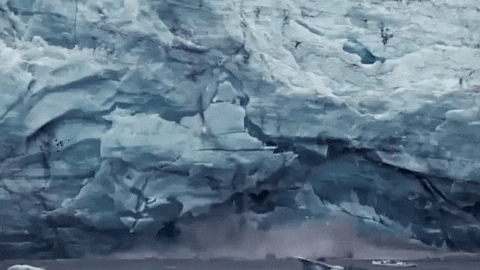The Arctic region, often regarded as the “Earth’s refrigerator,” is undergoing an alarming transformation due to climate change. The rapid melting of the ice caps is not just an environmental concern; it serves as a bellwether for the effects of global warming. Understanding this phenomenon invites a reconsideration of our perspectives on climate dynamics and human impact.
As the planet warms, Arctic temperatures are increasing at almost double the global average. This accelerated warming, known as Arctic amplification, fuels a series of cascading effects, culminating in the disintegration of polar ice sheets. These vast expanses of ice, which have stood for millennia, are now retreating at an unprecedented pace, raising questions about the broader implications for global sea levels and ecosystems.
The melting ice caps reveal much more than just a stark visual change in the landscape; they unearth critical climatic feedback loops. For instance, as ice diminishes, darker ocean waters are exposed, which absorb more sunlight and heat, further accelerating the melting process. This interplay highlights the intricate connections in our climate system, where seemingly isolated events can ripple across the globe, urging us to reconsider our place within this complex web.
Moreover, the receding ice triggers significant ecological disruptions. Polar bears, seals, and numerous other species depend on sea ice for hunting and breeding. As their habitat diminishes, so too does the delicate balance of the ecosystem. The biodiversity loss is not confined to Arctic regions; it influences global species migration and local food webs, entrenching humanity’s responsibility in these changes.
Human activities, particularly fossil fuel consumption, exacerbate these phenomena. The undeniable link between greenhouse gas emissions and rising temperatures prompts a moral imperative: a reassessment of our consumption patterns. We must recognize that our daily choices are intricately tied to the fate of the polar realms, demanding a widespread shift towards sustainable practices.
While the urgency of the situation can render a sense of despair, it also opens doors to innovation and environmental stewardship. The economic potential for sustainable technology is vast, offering avenues for communities to transition to greener alternatives. The melting Arctic prompts this shift—not merely as a challenge, but as an opportunity for transformative change, urging global collaboration and innovative thinking.
In conclusion, the Arctic ice cap melting signals a critical juncture for humanity. It calls for a profound reflection on our interactions with the environment and a collective resolve to navigate the shifting landscape responsibly. Understanding the ramifications of this natural phenomenon not only enhances our awareness but invites curiosity about the intricate dance between humanity and nature. The question remains: how will we respond to the urgent call of our time?
